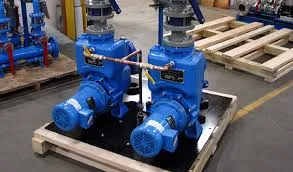English
- Afrikaans
- Albanian
- Amharic
- Arabic
- Armenian
- Azerbaijani
- Basque
- Belarusian
- Bengali
- Bosnian
- Bulgarian
- Catalan
- Cebuano
- Corsican
- Croatian
- Czech
- Danish
- Dutch
- English
- Esperanto
- Estonian
- Finnish
- French
- Frisian
- Galician
- Georgian
- German
- Greek
- Gujarati
- Haitian Creole
- hausa
- hawaiian
- Hebrew
- Hindi
- Miao
- Hungarian
- Icelandic
- igbo
- Indonesian
- irish
- Italian
- Japanese
- Javanese
- Kannada
- kazakh
- Khmer
- Rwandese
- Korean
- Kurdish
- Kyrgyz
- Lao
- Latin
- Latvian
- Lithuanian
- Luxembourgish
- Macedonian
- Malgashi
- Malay
- Malayalam
- Maltese
- Maori
- Marathi
- Mongolian
- Myanmar
- Nepali
- Norwegian
- Norwegian
- Occitan
- Pashto
- Persian
- Polish
- Portuguese
- Punjabi
- Romanian
- Russian
- Samoan
- Scottish Gaelic
- Serbian
- Sesotho
- Shona
- Sindhi
- Sinhala
- Slovak
- Slovenian
- Somali
- Spanish
- Sundanese
- Swahili
- Swedish
- Tagalog
- Tajik
- Tamil
- Tatar
- Telugu
- Thai
- Turkish
- Turkmen
- Ukrainian
- Urdu
- Uighur
- Uzbek
- Vietnamese
- Welsh
- Bantu
- Yiddish
- Yoruba
- Zulu
Telephone: +86 13120555503
Email: frank@cypump.com
Oct . 11, 2024 17:26 Back to list
Innovative Methods for Effectively Transporting Heavy Concrete Slurry in Construction Projects
Efficient Solutions for Transporting Heavy Concrete Slurry
The construction industry is one of the largest consumers of materials and resources globally. Among these materials, concrete is essential for constructing buildings, roads, and various infrastructures. However, the transportation of heavy concrete slurry poses significant challenges due to its weight, viscosity, and the potential for segregation of its components during transit. Recognizing the importance of efficient transportation methods can lead to reduced costs, enhanced productivity, and improved safety on construction sites.
Understanding Concrete Slurry
Concrete slurry is a mixture of cement, water, and aggregates designed for various construction applications. The heavy aspect refers to its density, which can become problematic when transporting large volumes over substantial distances. Factors like environmental conditions, the type of aggregates used, and the desired workability of the concrete contribute to the challenges faced during transportation. If not managed correctly, the slurry's consistency can change, necessitating re-mixing or even waste.
Challenges in Transportation
Transporting heavy concrete slurry involves overcoming several hurdles, including
1. Segregation and Settling The heavier aggregates in the mixture can settle, leading to uneven distribution and impacting the quality of the concrete. Keeping the mixture homogeneous is crucial throughout transport.
2. Viscosity and Pumping Issues The thicker the slurry, the harder it becomes to pump. High viscosity can result in clogged pipes and require higher energy inputs for pumping operations.
3. Weight Considerations Heavy concrete slurry weighs down transport vehicles, often resulting in exceeding load limits and leading to increased transportation costs.
'efficient solutions for transporting heavy concrete slurry ...'

Efficient Transportation Solutions
To address these challenges, various innovative solutions have been developed
1. Use of Specialized Transport Vehicles Trucks equipped with agitation systems can keep the concrete slurry in motion, preventing segregation. The vehicles can also be fitted with insulated tanks that maintain the slurry's temperature, reducing the likelihood of excessive thickening during transport.
2. Pumping Systems Advanced pumping systems can increase efficiency by enabling the movement of heavier mixtures over long distances. Using high-pressure pumps specifically designed for moving concrete slurry can minimize the risk of blockages while reducing operational costs.
3. Water Reducing Agents Incorporating water-reducing agents or admixtures can reduce the viscosity of the slurry, making it easier to transport. These additives help maintain the mixture's workability without significantly altering the water-cement ratio.
4. Batching Plants on-Site Establishing a batching plant closer to the construction site can minimize transportation needs and reduce travel times. This approach allows for just-in-time delivery, ensuring that the concrete slurry is fresh and usable upon arrival.
5. Segregation Control Techniques Utilizing methods such as controlling the particle size distribution or incorporating synthetic fibers into the mixture can help mitigate segregation during transport. These techniques enhance the stability of the slurry and promote a homogenous mix.
6. Monitoring Technology The integration of IoT (Internet of Things) technology has emerged as a game-changer in the construction sector. Real-time monitoring of concrete conditions during transport can alert operators to any changes in viscosity, temperature, or segregation, allowing for immediate corrective actions.
Conclusion
Efficient transport of heavy concrete slurry is vital in the construction industry, directly impacting project timelines and costs. By leveraging innovative transport solutions, such as specialized vehicles, advanced pumping systems, additives, and on-site batching, companies can ensure the successful delivery of quality concrete. Embracing these efficient methods will not only enhance productivity but also contribute to a more sustainable construction approach, ultimately benefiting the industry and the environment. With continued advancements in technology and materials, the future of transporting concrete slurry looks promising and more efficient than ever.
-
Horizontal Split Case Pump with GPT-4 Turbo | High Efficiency
NewsAug.01,2025
-
ISG Series Pipeline Pump - Chi Yuan Pumps | High Efficiency, Durable Design
NewsAug.01,2025
-
Advanced Flue Gas Desulfurization Pump with GPT-4 Turbo | Durable & Efficient
NewsJul.31,2025
-
ISG Series Vertical Pipeline Pump - Chi Yuan Pumps | Advanced Hydraulic Design&Durable Construction
NewsJul.31,2025
-
ISG Series Vertical Pipeline Pump - Chi Yuan Pumps | Energy Efficient & Low Noise
NewsJul.31,2025
-
pipeline pump - Chi Yuan Pumps Co., LTD.|High Efficiency&Low Noise
NewsJul.31,2025










